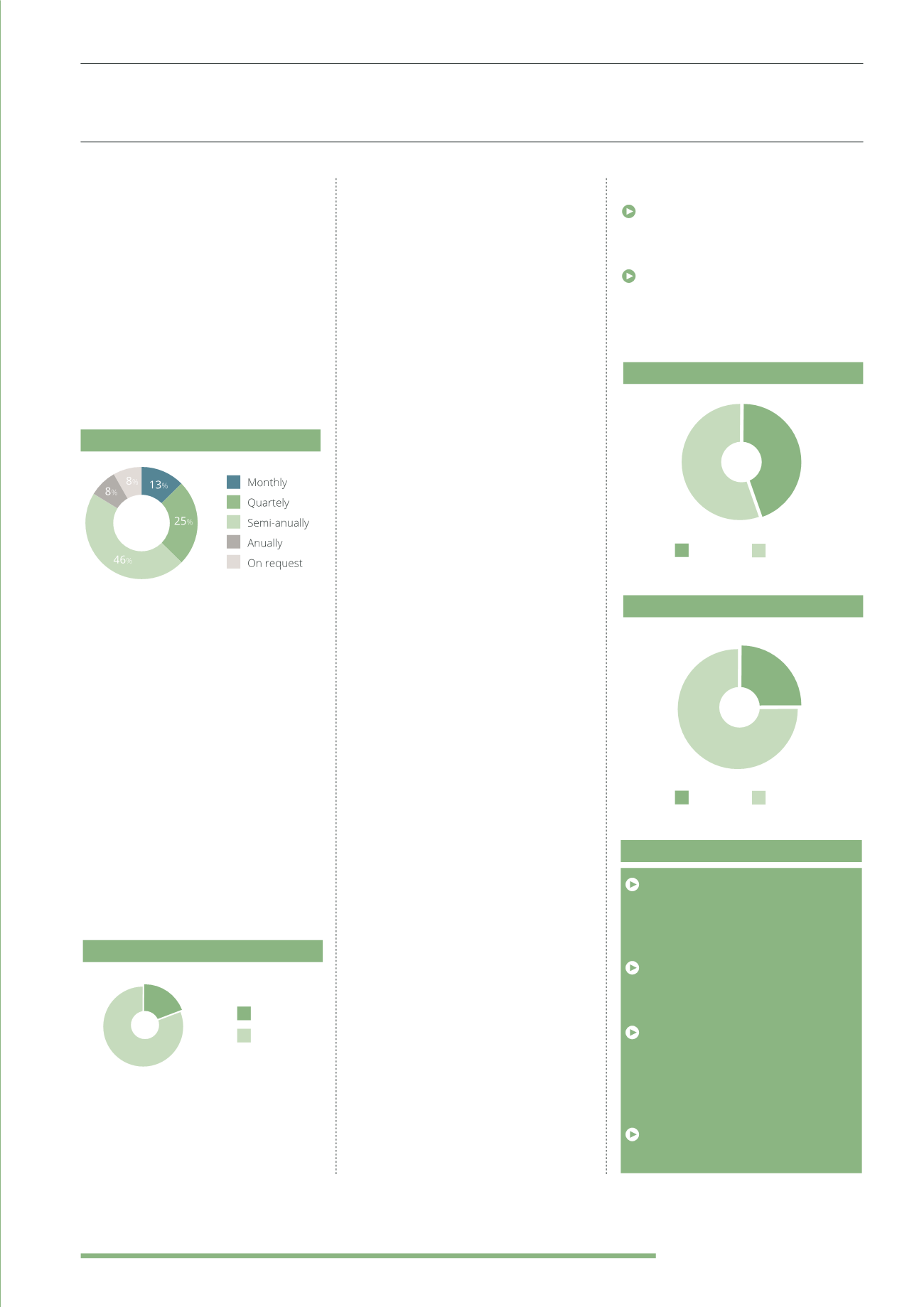
57
The market breakdown of BPR shows
that the majority of investment products
fall under general enterprise (46%). The
majority of these are AIM portfolios,
which tend to be sector agnostic and
look for investee companies that fit their
rigorous investment criteria. Other
products specialise in sectors where the
management team have experience,
contacts and a good track record.
Favoured sectors for specialism are
renewable energy (26%), infrastructure
(19%) and real estate (17%).
Portfolio valuation is a simple
business for AIM portfolios, but for
unlisted assets it can be much harder.
Of course, investors and advisers
need regular valuations for financial
planning purposes and to monitor the
performance of the managers.
According to our research, the most
common practice was to value the
portfolios semi-annually (46% of
investments). Quarterly was also
common (25%). At the extremes, a
minority were valued monthly (AIM
portfolios), while some were less
frequent ranging from annually to only at
the request of the investor.
Some products offer some form of
insurance - a logical feature bearing in
mind the vital importance of capital
preservation if these products are going
to meet their objectives.
AIM / NON-AIM
BPR products utilise BPR to achieve IHT
relief and since 1996 shares listed on
the AIM and ISDX market have qualified
for this relief. Since then the market has
split into those that focus on AIM and
those that do not.
Based on our register, 45% of products
take the form of AIM portfolios to gain
IHT relief. AIM is often viewed as high
risk as the shares can be volatile, there
have been a high number of company
failures and the market as a whole has
underperformed mainstream indices.
However, this overall picture is
misleading. A lot of the volatility,
failures and underperformance of AIM
stocks are driven by the high number
of IPOs, a weighting towards junior
miners and explorers, and various
investment trends that have come
and gone. These are all characteristics
that you would expect from a junior
market, but they mask the fact that
there are a large number of steady and
established companies listed on AIM,
with good earnings per share, stable
or growing dividends and entrenched
market positions: exactly the sorts of
companies that meet the investment
criteria of BPR investment product
managers. These are not start-ups,
speculative ventures, shell companies
or high growth firms with ambitions to
list on the main market.
As noted elsewhere, non-AIM products
tend to be concentrated in a narrower
range of assets that managers have
more control over and valuations are
less volatile.
Since August 2013, AIM shares have
qualified for inclusion within ISAs,
so in theory, an AIM portfolio of BPR
qualifying shares can also enjoy the tax
benefits of an ISA wrapper.
Of the products on the register, 26%
were advertised as being able to be held
within an ISA (52% of the AIM portfolios).
Perhaps some of the managers should
be doing more to highlight this valuable
benefit.
AIM / NON-AIM KEYPOINTS
45% of BPR investment products in
the market utilise AIM shares to achieve
IHT relief
Although AIM shares can be held in
an ISA, only 26% of the investment
products offered or promoted an ISA
option
VALUATION FREQUENCY
“Portfolio valuation is a simple business for AIM portfolios, but for unlisted assets it can be much
harder“
PORTFOLIO INSURANCE
81
%
19
%
Yes
No
AIM/NON AIM BPR PRODUCTS
55
%
45
%
ISA OPTION OFFERED
26
%
74
%
The market has seen a 90% increase
in the number of BPR investment
products in the market over the past
10 years
37 products are currently open to
investment with the majority of these
being evergreen
There is a wide range of products
for investors, with minimum
investment levels ranging from £5,000
to £500,000, but most in the £50,000
to £70,000 range
26% of products are ISAable, adding
another valuable benefit
OVERALL KEY POINTS
AIM
Non AIM
Yes
No


